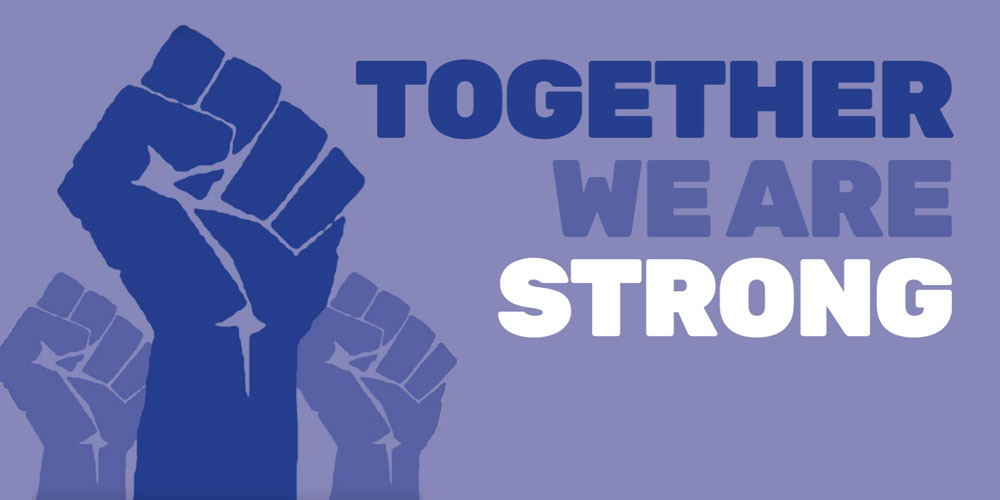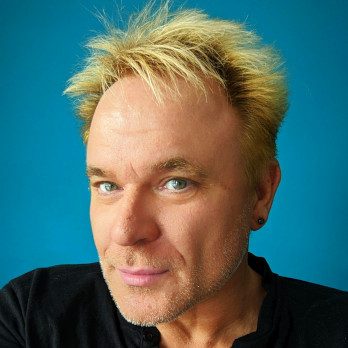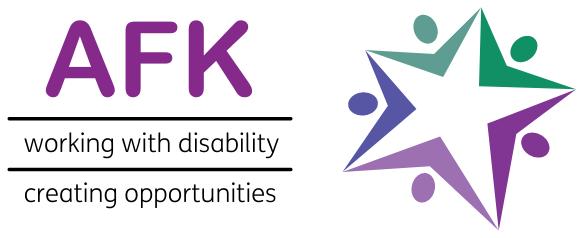Mik Scarlet: Together We Are Strong


Mik Scarlet is a broadcaster, journalist, presenter, actor, musician, commentator, disability advocate and campaigner. In this article, Mik discusses the importance of the Social Model of Disability and highlights how few disabled people are aware of it.
This article was first published in Unite Magazine in March 2018. Unite has sinced ceased publication.
We all have moments in life that mark a turning point. My wedding day, the day I was discovered by a TV producer, the day my spine collapsed. There are too many to list. An event that led to a huge change in my life was the moment I learned of the Social Model of Disability. Before it happened I was one person, afterwards another. So I’m going to use my first column here in UNITE to talk about this Social Model and if you haven’t heard of it before I hope it will change your life too.
I must admit I am a little evangelical about the Social Model of Disability, but I think it’s vital to spread the word about this way of understanding what it is to be disabled because it is truly empowering. Also because I recently discovered that only 3% of the UK’s disabled population understands what it is. That figure terrifies me as it’s really difficult to fight for equality and inclusion without knowledge of the Social Model. So why is it so important?
Firstly I should explain that models are used by academics to understand and describe what it means to be part of a society. There are models of gender, sexuality, childhood, ageing, ethnicity and of course disability. They allow anyone trying to understand a group to explore different ways of coming to that understanding. For most people the usual way of understanding what it means to be disabled has come from the Medical Model of Disability.
This model seems obvious. Disabled people are disabled by the things about them that are medical, the bits of us that don’t work the way they should. It says I am disabled because I have lost the ability to walk, following cancer. A blind person is disabled by their lack of ability to see. Simple. Or is it? Even before I had heard of another way of thinking about disability, I felt that just saying I was disabled by my body being different didn’t ring true. Once I got used to being a wheelchair user, I found that much of what I couldn’t do wasn’t so much about my lack of walking but due to a lack of consideration that someone like me would even want to do things. I couldn’t go to the pub because the pub wasn’t wheelchair accessible, because people like me didn’t go to pubs. People seemed to think I should wait to be cured, but I knew that wasn’t going to happen any time soon and I wasn’t going to sit at home, alone and bored, waiting for some medical breakthrough. I had a life to live and I didn’t see why being disabled should stop me.
I began campaigning to make my home town more accessible and soon had successes in my local cinema, a couple of nightclubs and the favourite punk pub. Also the town had a shopping centre that was totally wheelchair accessible, so I found that this idea idea that my lack of ability to walk was what disabled me felt wrong. As things became more accessible to me, I was less dis-abled by my lack of walking. Another thing that didn’t ring true was this idea that our medical issies made disabled people different from each other. If you consider that most people when they met me imagined I was a wheelchair user through an accident, usually a motorbike smash. When they discovered I had cancer, did that change my disability? Was I any less able to get up a flight of steps? Did I have less in common with someone who did have a bike smash?
By this time my media career had picked up, and I was a well known disabled TV personality. One day at an event about getting more disabled people on TV (yes they did happen as long ago as the 1990s but that’s another article) a wonderful, passionate disability rights campaigner called Vicky Waddington accosted me and explained to me all about the Social Model and why it was so important. She felt I had to know about this as I had started to make choices in my career that many of her political colleagues were worried about, but she felt I could be saved. I owe Vicky so much as she basically set me on a new path that day. She gave me a direction and passion to fight for change that burns in my to this day. She gave me the Social Model.
I think it’s really important to understand that the Social Model of Disability does accept that disabled people have medical issues. There are things we cannot do, or that we have conditions that impact on our health. Where it changes from the way most people imagine what it means to be disabled is that it asks are these really the things that dis-able us? It says no, instead saying that given the right treatment, support and assistance disabled people can achieve much more than just considering us a list of medical terms might allow. It explains that what really disables us are the barriers that we face every day. Whether they are physical, like a flight of stairs for a wheelchair user, attitudinal, like people thinking disabled people won’t want to do things non-disabled people take for granted, say getting on a bus, or informational, like a lack of a braille menu in a restaurant if you are visually impaired. It says that while the medical stuff, which it calls impairments, means we might have to do things differently, it’s society that has decided not to give us the chance to do things that way.
Now why is that important? Does it really change the fact I cannot walk, or you cannot see, or hear or whatever? Well, yes it does because it says that all of these things make us different, not less able. It’s society that prevents us from achieving. The great thing is the Social Model says that society can change. I cannot learn to walk, but society can install lifts, wheelchair accessible toilets and accept that I get around on wheels not feet. It’s that ability for change that makes the Social Model so important. It gives us all the method to shape the world to be inclusive, to allow us to achieve and to lessen our dis-ability. It even says that one day we may reach a point where we are no longer disabled, but become something else altogether (which is yet another subject for an article).
I now train businesses to adopt the Social Model in the way they are run, and it is leading to many of the advances we are seeing in our society. Disabled people need to embrace it as it truly allows us to have a louder voice than ever before. It gives us that ability to speak together, because whatever our impairment, our experience of being disabled by society is exactly the same, and with that combined voice we become too large a group to ignore. Businesses want our money, politicians want our vote. If we UNITE and sy we demand equality, equity and inclusion for all disabled people we will get it. It might not happen quickly but we must not lose hope. By uniting together we will win.
